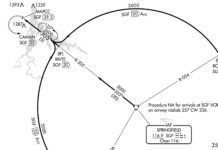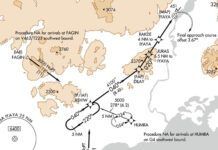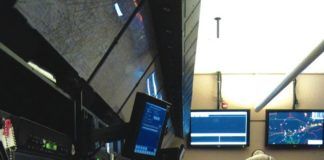Talking on the radio is, of course, only half of the equation. It goes without saying that if you’re flying in new airspace and into a new airport, you’ve got to be actively listening for your call sign and related instructions. What may not be so obvious is maintaining that same level of attentiveness when you’re flying in your own backyard.
I got a perfect illustration of this just a few weeks ago on a pretty VFR morning. I was training a new controller on Ground. We had a pair of aircraft waiting to cross the active runway: Piper Meridian 45J at Hotel, and Lear Jet 86C much further down the runway, holding short at Bravo. The Lear driver was a local, who flew out of our airport nearly every day.
We were waiting on a touch-and-go Cessna 172 on short final. Tower had already given us permission to cross the runway with the Meridian behind the Skyhawk. My fresh trainee hadn’t gotten around to coordinating the Lear’s crossing yet, even though he should’ve done it ages ago.
The Cessna departed. My trainee addressed the Piper. “Meridian 45B, cross Runway 36.” A screech lit off in our headsets; two aircraft had stepped on each other’s transmissions. I saw the Meridian start moving, but down the way, the Lear also started taxiing towards the runway. The local jet pilot must’ve thought the crossing instruction was for him.
I conjured up my best “parent voice” and stopped the runway incursion before it started. “Lear 86C,” I said, “hold short Runway 36. That last call was for another aircraft.”
The Lear bobbed to a halt short of the hold line. “Roger. I’m so sorry about that,” its pilot replied. “Haven’t had my 5 Hour Energy yet. Holding short of 36, Lear 86C.” Since the Meridian’s readback had also been stepped on, I reiterated the crossing to him. My trainee then coordinated the Lear’s crossing with Tower and got him across without further incident.
Active listening is a vital skill for every level of pilot, whether you’re measuring your airspeed in knots or Mach numbers. It’s especially critical to remember when you’re flying into very familiar airports. Just like driving in one’s own neighborhood, the less one has to think about one’s surroundings, the easier it is to become complacent. Nobody likes pilot deviations and the investigatory mess they cause, so don’t let your guard down.




